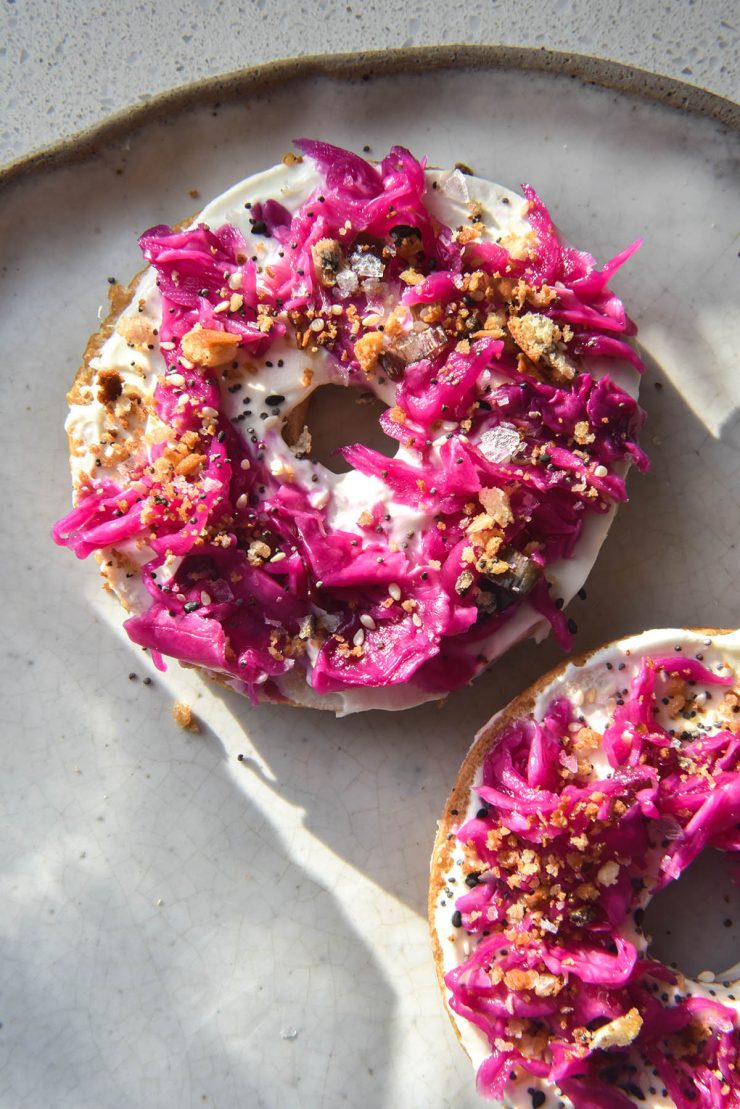
I do love a dupe of something FODMAPPY. We made tofu hummus, and we’ve made garlic infused whipped ghee. Today, we’re making FODMAP-friendly ‘pickled red onion’ otherwise known as not onion.
FODMAP friendly ‘pickled red onion’
Onion, red onion and pickled red onion are all high FODMAP. Onion is one of my worst offenders, but I do love the look and taste of a crunchy pickled red onion. Not only do they taste delicious, but the colour really just adds some pizzazz onto practically anything and everything. As someone who grew up in the aesthetic food Instagram era, I knew I had to create a solid dupe.
So, what is this FODMAP-friendly ‘pickled red onion’ made of, if not onion? I’m sure you’ve guessed the main component red cabbage. Red cabbage has that characteristic vibrant colour when pickled, and it also has a similar fresh crunchiness. To give these an onion hit, though, we have two more ingredients: asafoetida powder and spring onion greens.
What is asafoetida powder?
Asafoetida or hing is the critical ingredient in this FODMAP-friendly ‘pickled red onion’. This is what takes the recipe from tasting like pickled red cabbage (which is what it is) to something more akin to pickled onion. Asafoetida is the backbone of the recipe, and without it you are making pickled cabbage. Which is fine, of course, but it’s not what this recipe intends to achieve.
Asafoetida is a pungent powder that is derived from the gum of a variety of giant fennel. It has a super strong smell and a cooked onion and garlic flavour. It generally compounded or cut with a flour – rice, wheat or some other variety. This means that it is important to check the labels if you need it to be 100% gluten free as well as FODMAP friendly.
Some asafoetida powder on the market these days is not cut with any flour, which makes that even stronger. Check the ingredients on the package before use – this recipe assumes your asafoetida has been cut with flour. Use less and to taste if you’re using pure asafoetida.
Recipe notes
How much pickling brine you add is up to you. I found that using 1/2 cup (125ml) water and 1/2 cup (125ml) vinegar resulted in too much leftover brine for my liking. That said, using 1/4 cup (60ml) water and 1/4 cup (60ml) vinegar felt a bit unnerving to begin with, because it didn’t cover the cabbage. Once the cabbage cooks, though, it doesn’t matter. So really, it’s a matter of preference as to how much brine you would like.
I highly recommend using a mandoline or really finely slicing the cabbage. Super fine, briney pieces of asafoetida flavoured cabbage are what make this taste like onion. Big chunks will probably taste like cabbage.
As we have discussed, asafoetida or hing is critical to success. You can buy it at Indian grocers, online, or these days in some bougie boutique grocers. It lasts forever because you only use small amounts, and is well worth the time taken to source it.
I quite like adding some spring onion greens to drive home the onion flavour. I have added them in the pickling process, but I think in future I would add them to the pickle at the end for some oniony freshness.
This recipe makes about 1/2 – 3/4 cup worth of pickled ‘red onion’ – a small batch. This will probably top around 6 chilli bowls with a decent serve of ‘onion’ on each. It keeps well in the fridge in an airtight container. None of my batches have lasted longer than a week (because I ate them) but pickles are good at keeping nicely.
FODMAP notes
- Red or purple cabbage is FODMAP friendly in 75g serves per person. This recipe uses 100g cabbage. It’s delicious, but I can’t see a situation in which you would eat 2/3 or so of it in one go, so this should be fine.
- Asafoetida is considered low FODMAP by Monash in 1/4 teaspoon serves per person. They have not suggested an upper limit, which makes me think that it has a higher threshold. Again, no issues here.
- The only other thing to discuss is the optional spring onion greenery. This is a ‘eat freely’ food according to Monash, so we’re good.
Extra flavouring options and suggestions
The sky is kind of the limit here in terms of things you could add. Some suggestions to get you started:
- Chilli flakes, peppercorns, fresh chillies
- Fresh or dried herbs – rosemary, sage, thyme
- Lime or lemon zest
- Spices
How can I use this FODMAP friendly ‘pickled red onion’?
I mean, the sky is the limit really. I do have suggestions though:
- On this FODMAP friendly vegetarian or vegan chilli (sin carne)
- On these vegetarian or vegan enchiladas
- On a bagel or on some freshly made baguettes or sourdough (with some cream cheese and dill)
- Stirred through a salad or served on top for some colour and crunch
- Alongside the quick taco mince from my cookbook Intolerance Friendly Kitchen
- Atop a pumpkin or leek and potato soup for colour, vibrancy, freshness and crunch
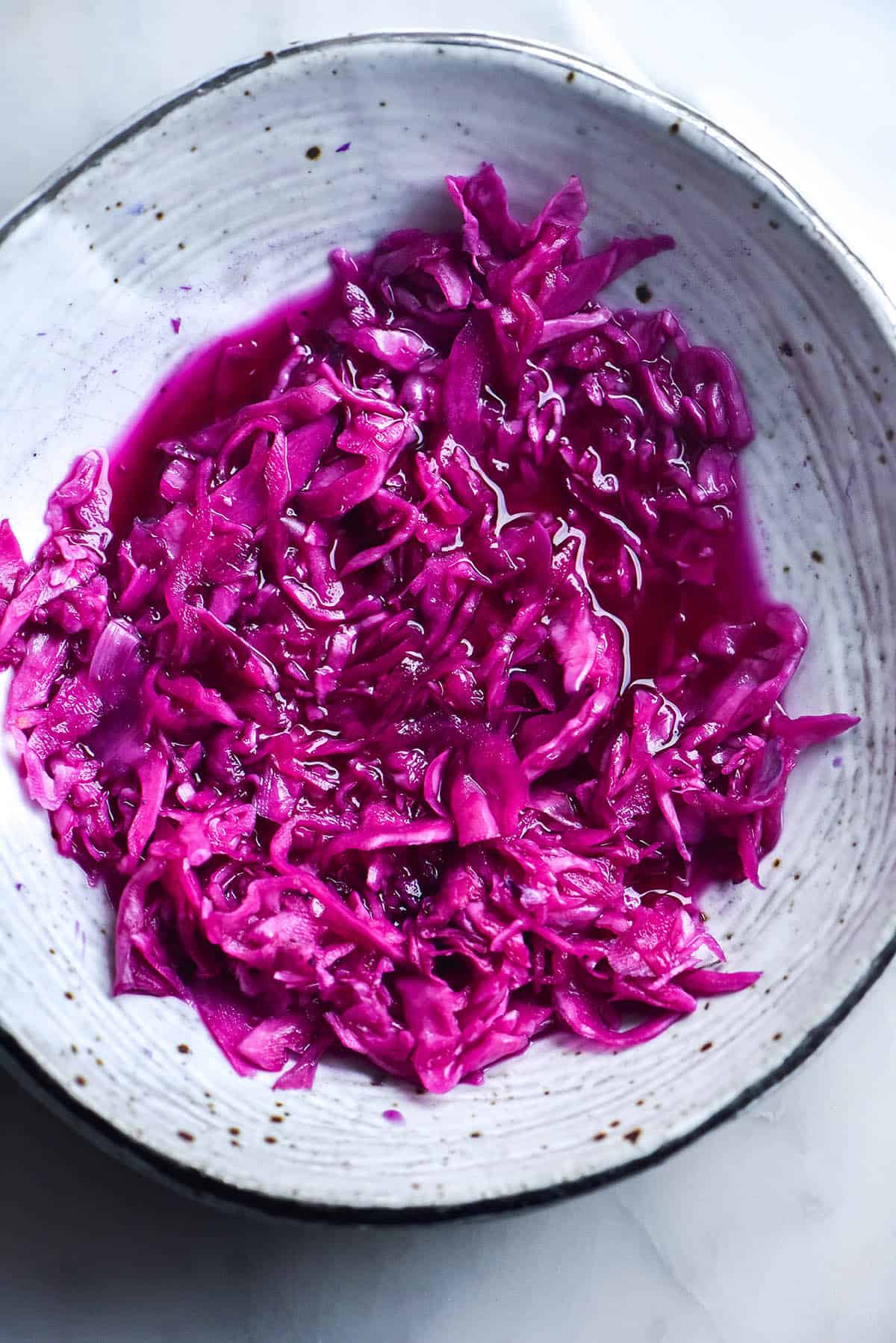
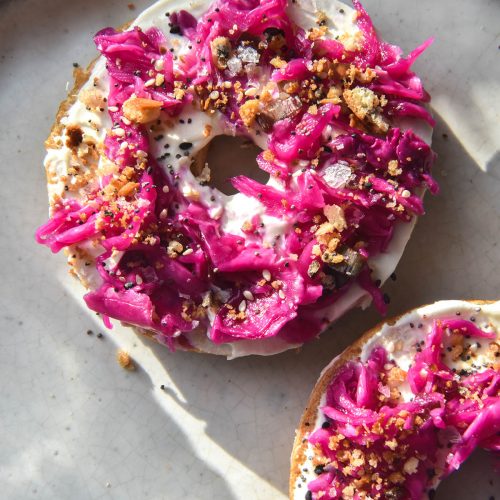
FODMAP friendly ‘pickled red onion’
Ingredients
- 100 g (1 cup) finely mandolined red cabbage
- 1/4 – 1/2 cup (60-120ml) water (see notes)
- 1/4 – 1/2 cup (60-120ml) white or apple cider vinegar (see notes)
- 1/2 – 1 tablespoon white sugar
- Heaped 1/4 teaspoon asafoetida powder see notes
- Seasoning to taste
Instructions
- Mandoline or really finely slice your cabbage.
- Combine the sugar, vinegar, sugar and asafoetida in a small – medium saucepan over a medium heat. Add the cabbage and cook for 2-3 minutes or until the cabbage has softened and turned a vibrant pinky purple. Add the seasoning and adjust according to your tastes
- Serve as is, or store in an airtight container in the fridge for 1-2 weeks.
Notes
NOTES
- How much pickling brine you add is up to you. I found that using 1/2 cup (125ml) water and 1/2 cup (125ml) vinegar resulted in too much leftover brine for my liking. That said, using 1/4 cup (60ml) water and 1/4 cup (60ml) vinegar felt a bit unnerving to begin with, because it didn’t cover the cabbage. Once the cabbage cooks, though, it doesn’t matter. So really, it’s a matter of preference as to how much brine you would like.
- I highly recommend using a mandoline or really finely slicing the cabbage. Super fine, briney pieces of asafoetida flavoured cabbage are what make this taste like onion. Big chunks will probably taste like cabbage.
- As we have discussed, asafoetida or hing is critical to success. You can buy it at Indian grocers, online, or these days in some bougie boutique grocers. It lasts forever because you only use small amounts, and is well worth the time taken to source it.

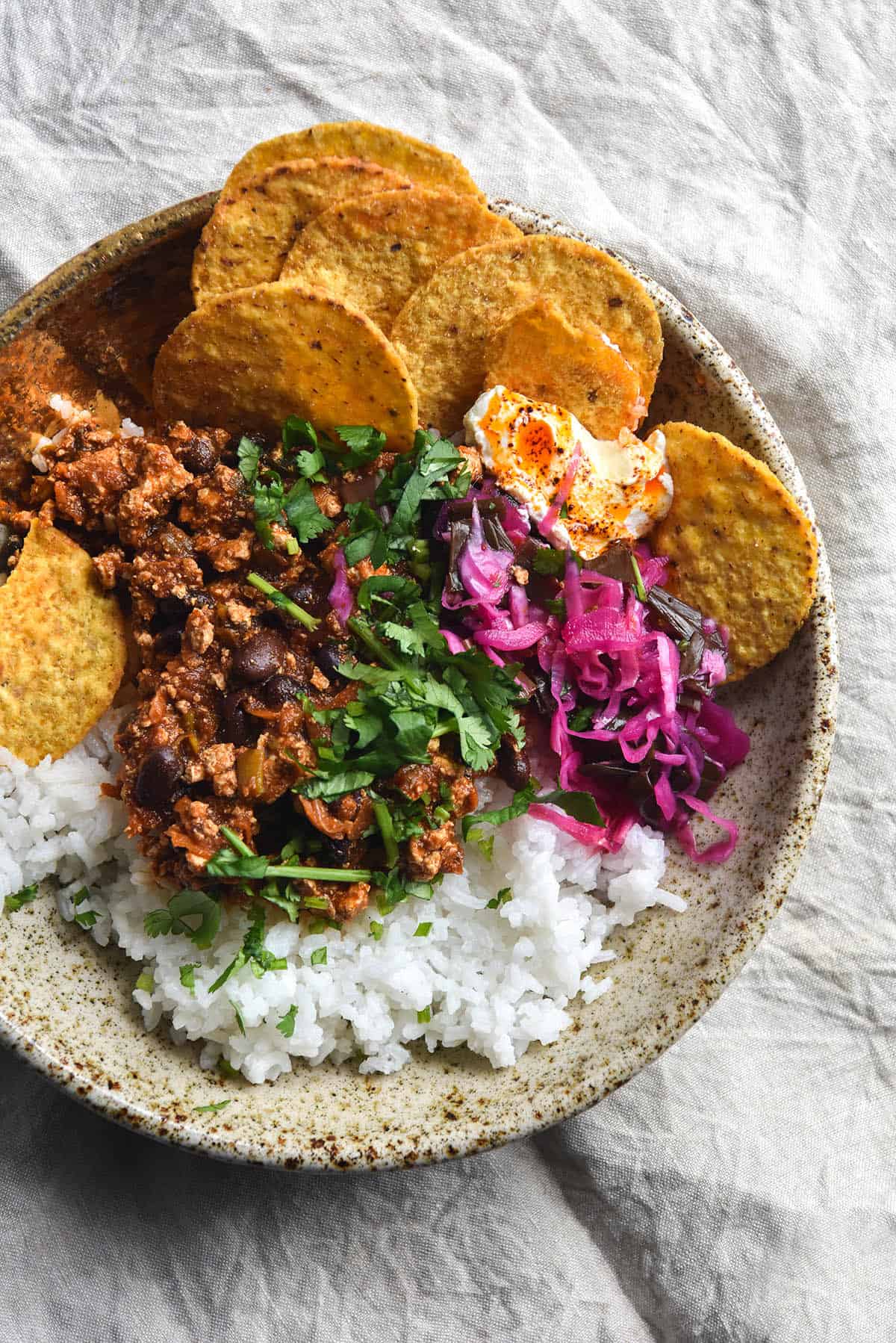
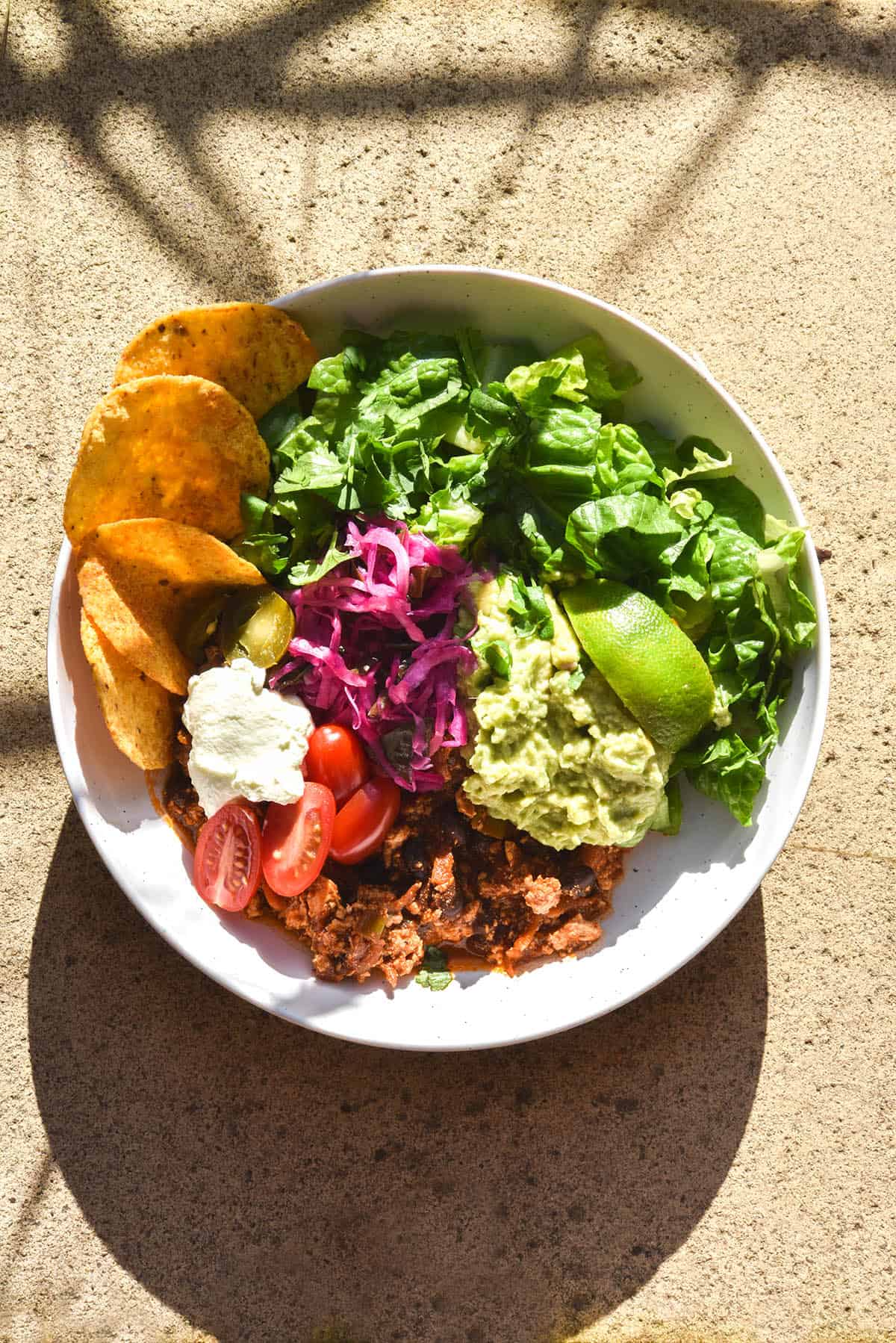
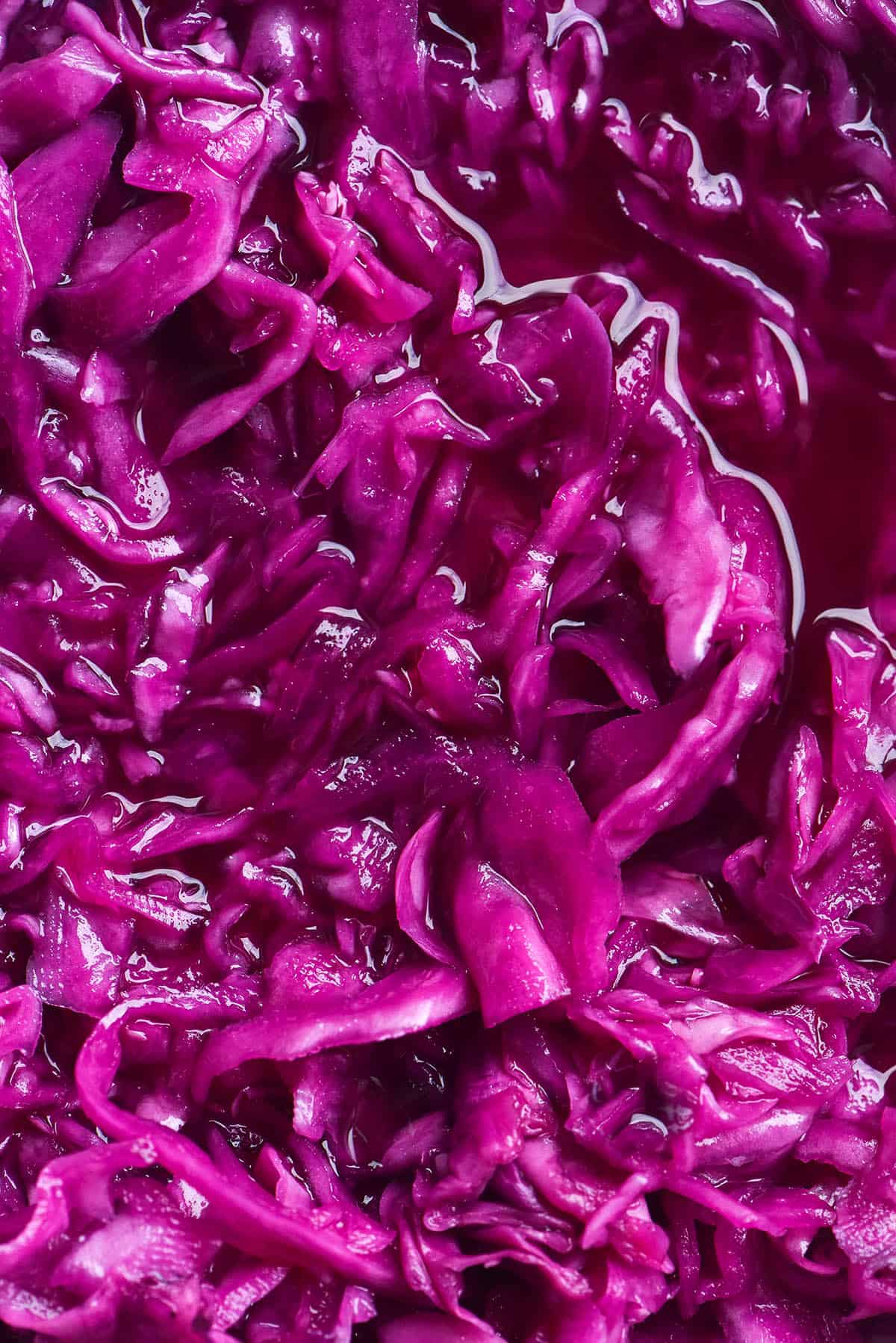
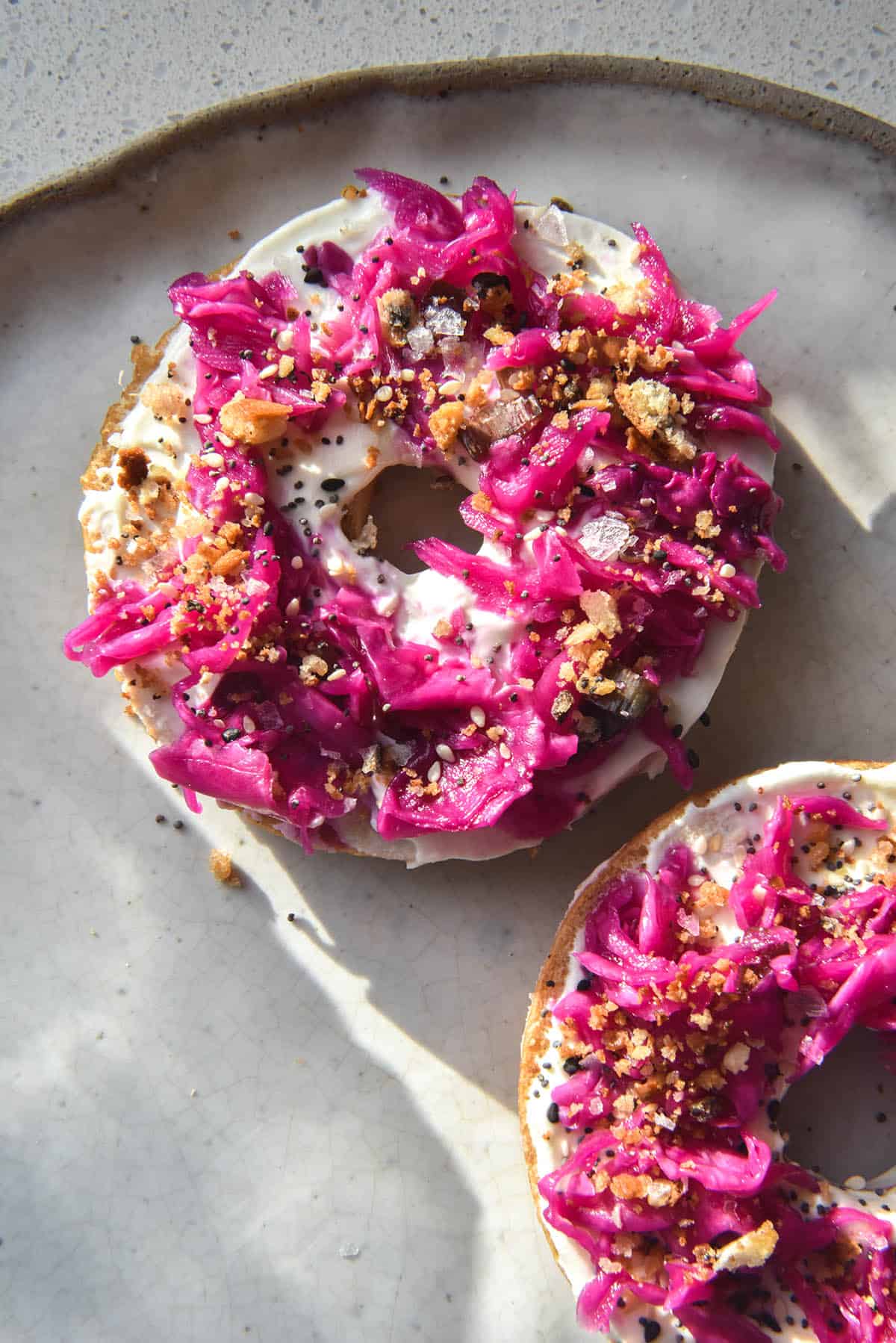
1 Comment